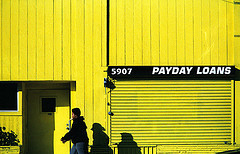Banks Shutting Down Branches In Poorer Hoods While Opening In Richer

(eyetwist)
The New York Times combed through the data and found that when the banks close branches, they’re doing it in poorer neighborhoods. And when they open a new branch, it’s more likely to be in a well-off area. While that makes business sense, it could violate the spirit of the Community Reinvestment Act which was passed to curb “redlining,” where lower-income neighborhoods are discriminated against by the financial services industry.
In low-income areas, where the median household income was below $25,000, and in moderate-income areas, where the medium household income was between $25,000 and $50,000, the number of branches declined by 396 between 2008 and 2010. In neighborhoods where household income was above $100,000, by contrast, 82 branches were added during the same period.
“You don’t have to be a statistician to see that there’s a dual financial system in America, one for essentially middle- and high-income consumers, and another one for the people that can least afford it,” said John Taylor, president of the National Community Reinvestment Coalition, a group that advocates for expanding financial services in underserved communities.
No worries, I’m sure predatory payday lenders and check cashing joints will rush in to fill the void.
Bank Closings Tilt Toward Poor Areas [NYT]
Want more consumer news? Visit our parent organization, Consumer Reports, for the latest on scams, recalls, and other consumer issues.

